Water softeners are extremely handy when your tap water contains a high mineral quantity. It can give way to several plumbing issues. The water softener devices depend on the water hardness level present in the supplied water. A water softener system is an appliance that turns hard water into soft water by removing magnesium and calcium cations.
Table of Contents
Why turning off the water softener is essential?
As pipes can freeze and burst in the winter season, the same blockage can happen in your water softening device. If the valves or pipes of your softening unit freeze, they can easily burst from the pressure and cause a huge mess.
Whole House Water Softener System Modes
As mentioned above, every water softener function in three modes. Therefore, to successfully stop its process, we will target the following modes of the device.
Service:
In this mode, the device continually softens the water at home.
Regeneration:
In the regeneration mode, the device recharges itself for the next service.
Bypass:
The water softener is no longer in action in the bypass mode, and the machine permits the hard water to run through the taps.
Which things needed to stop water softener?
The following necessary items are needed to stop water softeners:
Removal kit:
The type of removal kit directly depends on the size of water pipes installed at your home. These seal kits contain essentials to help seal the water entirely from entering water softeners. The kit usually includes the different sizes of fittings that cap off inlets, outlets, and drains.
Grips:
The grip helps in tightening and loosening water valves. Gripping tools include:
Channel plyers:
The pliers grip and crimp the end of the pipeline. The gripping jaws on the plier lock tight in place and prevent bolt and nut failure.
Adjustable wrench device:
A wrench is a must-have tool when it comes to plumbing. The wrench jaws tend to loosen during use, making it easy for you to turn off the water softener.
Towels:
Find an old set of towels at home as it would help you turn the system off. While releasing the choice, you can experience some water spillage. Towels are highly optional because the microfiber of the towel can absorb water to the highest potential from our perspective. Therefore, if you want, you can use it while following the steps of turning off the water softening device.
Method No.1: Disconnecting Water Softener From Your Water Supply
You can turn off the softener with or without disconnecting it if you wish to disconnect your softening unit completely. Follow the step mentioned below:
Step 1: Assemble the tools:
The first step is to assemble all your tools beforehand so that you won’t hassle once the procedure begins. Keep the equipment in your close vicinity to grab it whenever you need it.
Step 2: Trace pipes:
Before closing the valve, evaluate the connected pipes connected to the water softener. Each connected pipe has an inlet, an outlet, and a drain. To analyze the situation of the hose, open the water softener.
Step 3: Remove the hoses:
While removing the hose connection, you can experience some leakage. Therefore, put a towel underneath the pipes. Once the inlet and outlet are turned off, disconnect the drain. You can pull the overflow out or cut it with a cutter. Pulling action also works effectively with the drain. Once all the connections are taken out, you are left with a completely turned off water softener system.
Step 4: Sealing the valve:
You can seal the valve using different fittings available in the sealing kit. These fittings are used to avoid any accidental water leakage.
Check Out: Top-Rated Portable Water Softener for RV
Method No.2: Unplugging Water Softener From The Power Supply
You can turn off the softening unit in this alternative method without completely removing it. Follow these steps
Trace the hose:
This step is the same as method 1, requiring you to locate the hose. Find the hose that leads you to the copper pipeline. Search the valve knobs and set them to the designated settings. You can use pliers to set the valve’s handles to 90 degrees. Once moved, the water valve and inlet should be closed so that the bypass mode is on so that the water runs throughout your house.
Inspect the pipe
The next step is to inspect the pipe in the water softener. The device should not have access to hardware as you have cut off its entry in the previous step. Later on, you can unplug the device so that it does not have any access to electricity.
Check Out: Top Softening Unit in Canada in 2022
Why Turn Off a Water Softener?
Let’s look at a few reasons why you need to switch off your water softening unit:
- You are going on vacation for a week or two, and the unit will not be in use. Then, turn off your water softener system and water supply to avoid leakage.
- If you’ve noticed a leakage, a weird noise, or a broken part on your water softener, you’ll need to turn the system off as quickly as possible.
- Usually, you don’t want your softening unit to soften your water while you’re adding up the salt. In this case, putting the softener into bypass mode means that you can still use your water while performing system maintenance.
Check Out: How to clean a water softener system?
Conclusion
A water softener device can cut back the mineral quantity of hard water, thus turning it into soft water. Hard water can increase pipe blockage, further leading to hose burst in the worst-case scenario. Here, we have discussed two methods that would allow you to turn off the water softening device. It is highly advised that you turn the gadget off before going on an extended vacation.

Steve Smith is a United State Licensed Plumber with over 18 years of plumbing experience. Steve has conducted residential and commercial plumbing jobs throughout the state and currently works for one of California’s largest plumbing companies. When he’s not working, Steve enjoys spending time with his daughter and son.


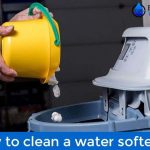

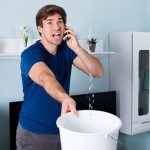
![Can you drink water from a water softener? [Important to Know] drinking soft water](https://prowatersoftener.com/wp-content/uploads/2021/03/drink-water-from-softener-150x150.jpg)
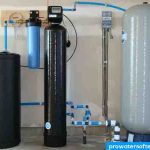
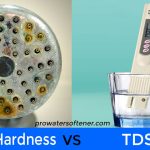
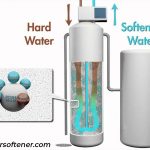
Leave a Reply